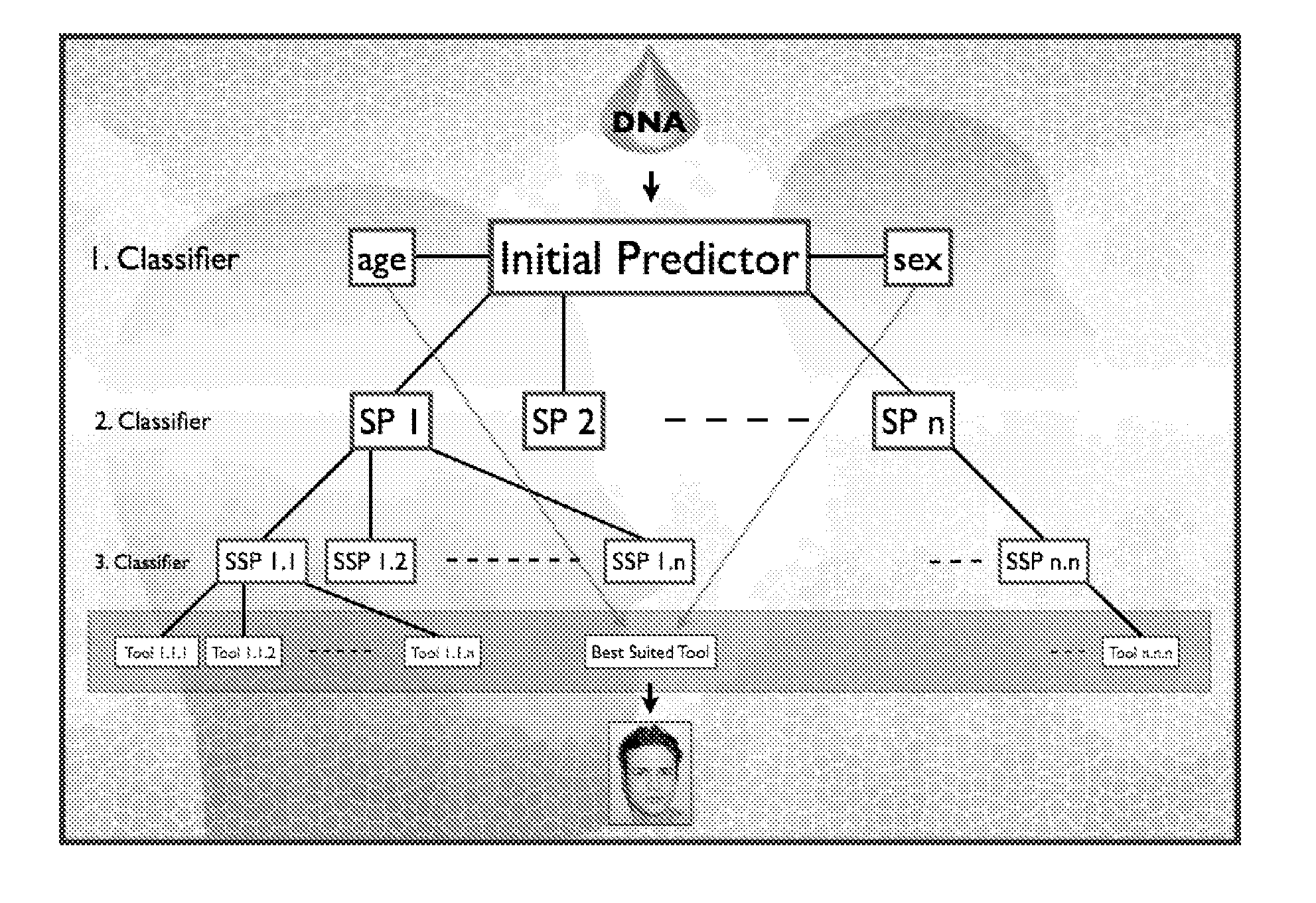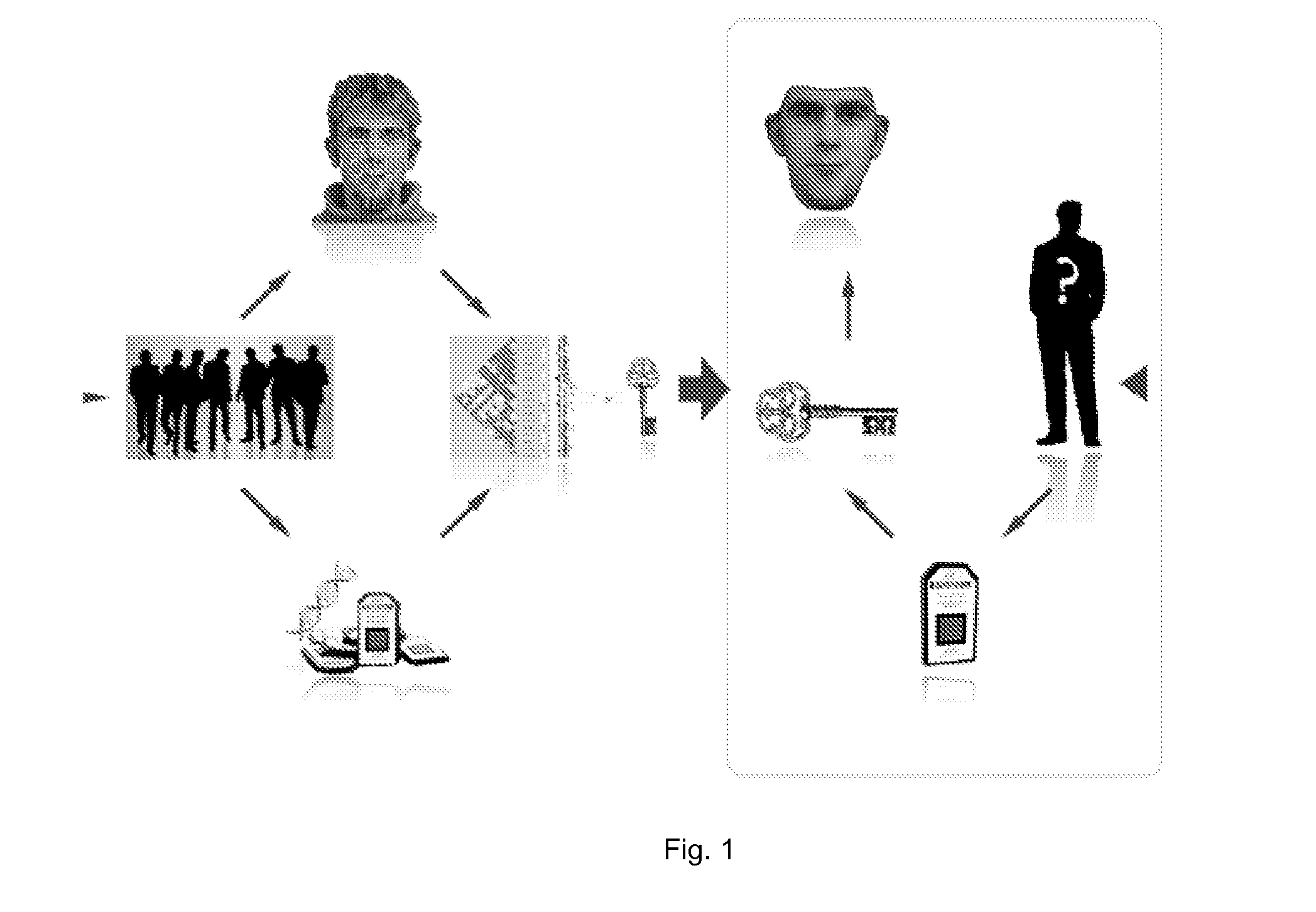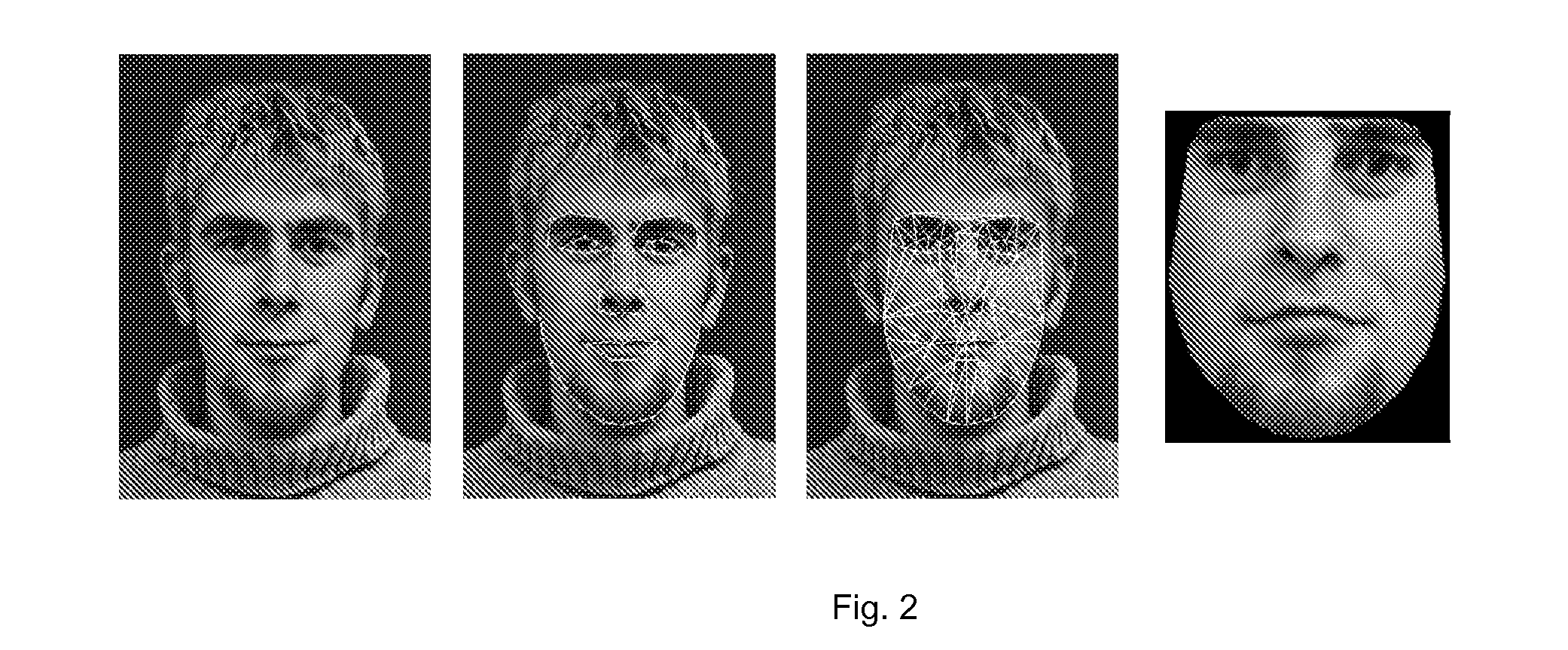Genome-Wide Association Study Identifying Determinants Of Facial Characteristics For Facial Image Generation
a gene-wide association and facial characteristic technology, applied in the field of facial composite generation, can solve the problems of obvious limitations of witness-based police composites, and achieve the effect of facilitating the generation of approximate facial images
- Summary
- Abstract
- Description
- Claims
- Application Information
AI Technical Summary
Benefits of technology
Problems solved by technology
Method used
Image
Examples
embodiments
[0066]In a main embodiment the invention relates to a method for generating a facial composite from a genetic profile comprising the steps of:[0067]a. subjecting a biological sample to genotyping thereby generating a profile of the genetic markers associated to the numerical facial descriptors (NFD) for said sample;[0068]b. reverse engineering a NFD from the profile of the associated genetic variants.[0069]c. constructing a facial composite from the reverse engineered numerical facial descriptors (NFDs)
[0070]Another main embodiment relates to a system for generating a facial composite from a genetic profile comprising the steps of:[0071]a. means for acquiring a biological sample,[0072]b. means for subjecting a biological sample to genotyping thereby generating a profile of the genetic markers associated to the numerical facial descriptors (NFD) for said sample;[0073]c. means for reverse engineer a NFD from the profile of the associated genetic variants,[0074]d. means for constructin...
example 1
Cohort and Data
[0276]Many thousands of subjects representing all parts of the world population, all age ranges, all ethnic groups and both sexes will be used as input in the creation of the computer program that will translate genetic information into a photo-like image of the person to whom the genetic information belongs.
Research Strategy
[0277]Image analysis and GWAS will be combined. The strategy for the development of the tool is shown schematically in FIG. 2 and described above. The final product will be structured in a hierarchical manner as shown in FIG. 3 in such a way that the genetic information used as input will to begin with be used as input in an initial predictor / classifier that will predict age, sex and which ethnical-group the person belongs to. Hereafter the same genetic information will be used in the best suited sub predictor / classifier, within which it will be classified to belong to a certain group and be redirected to the belonging sub-sub predictor / classifier...
example 2
Cohort and Data
[0278]1,000 ethnic Danish male subjects will be used. They should be without facial hair and within the age range of 25 to 30 years. All subjects will be photographed using a 3D camera and their genetic profiles will be determined by hybridizing blood-extracted DNA to an Affymetrix Genome-Wide Human SNP 6.0 array at the DNA-MicroArray Core (D-MAC) facility.
Research Strategy
[0279]Image analysis and GWAS will be combined. The overall strategy for the development of the tool is shown schematically in FIG. 2.
PUM
 Login to View More
Login to View More Abstract
Description
Claims
Application Information
 Login to View More
Login to View More - R&D
- Intellectual Property
- Life Sciences
- Materials
- Tech Scout
- Unparalleled Data Quality
- Higher Quality Content
- 60% Fewer Hallucinations
Browse by: Latest US Patents, China's latest patents, Technical Efficacy Thesaurus, Application Domain, Technology Topic, Popular Technical Reports.
© 2025 PatSnap. All rights reserved.Legal|Privacy policy|Modern Slavery Act Transparency Statement|Sitemap|About US| Contact US: help@patsnap.com



